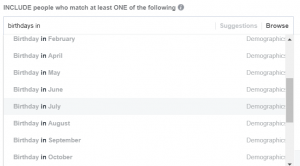Learn how AI-driven workflow automation enhances marketing outcomes and ways to maximize the benefits of automated processes.
In this four-part series, we’re exploring four categories of artificial intelligence (AI), how they can meaningfully impact marketers and their customers and what to potentially avoid. So far, we’ve explored generative AI, predictive analytics and personalized customer journeys.
The last article of the series will look at workflow automation or robotic process automation (RPA), or AI-based tools that enable repetitive tasks to be performed by software rather than humans. This is the oldest and most mature form of artificial intelligence explored in this article series.
What it is and why it’s worth paying attention to today
Workflow or task automation, sometimes called robotic process automation (RPA), predates most artificial intelligence applications and can vary widely in its breadth and depth.
RPA as a term can be traced to the 1990s, most commonly used for automated testing of user interfaces, though it became more prominent starting in this century, and RPA’s definition expanded to many other types of use cases.
This area of AI includes:
- Automating and streamlining routine and/or repetitive tasks such as data entry.
- Task assignment and routing requests and other assignments from one role, task, team or system to another.
It is beneficial for highly repetitive functions that would otherwise require a team of humans an excessive amount of time to perform. From a marketing and customer experience perspective, workflow automation and RPA can be useful for:
- Lead scoring and segmentation.
- Automating messages and series of communications.
- Helping internal teams route tasks that are components of complex campaigns and efforts spanning teams, departments, channels and stages in the customer journey.
Near-term potential
Although workflow automation has been around for a while, there is still plenty of room for this area to grow, much like the others we’ve discussed in the previous three articles.
Workflow automation, in its simplest form, is a series of “if this, then that” functions. But as the AI behind them has more data to work with across a greater amount of systems to work within, the benefits it can offer will continue to grow.
Let’s look at a few workflow automation areas with the most significant near-term potential for marketers.
Better automation and internal orchestration
Marketing, customer experience, customer service and other functions in the enterprise have great complexity. What may seem like a simple action for a customer to request or complete often relies on several teams and their corresponding processes and platforms to complete. Thus, anything that enables quicker collaboration and orchestration of efforts between these people, processes and platforms can greatly improve the customer experience.
Automated responses to customer service requests
Customers appreciate timely responses and RPA and automation can greatly help here by providing information, next actions and other key communications triggered immediately upon a customer performing an action.
Automating lead qualification
Anything from lead scoring, audience segmentation and routing a customer or group of customers into an automated workflow, such as an email drip campaign or a flow in a customer journey orchestration setup.
Automated report generation
With the wealth of information available, it has never been easier to visualize reports that help marketers understand the outcomes of their efforts. That said, it can often be time-consuming to generate these reports.
By automating report creation and having them sent to the correct parties at the right times, AI can greatly assist teams so they can focus on their work.
Automated annotations to customer records
For high-volume B2C organizations, this is becoming more necessary as consumers channel-switch and disparate pieces of information exist throughout an organization’s data ecosystem. Even for lower-volume B2B organizations, this helps provide information but doesn’t get in the way of “high touch” customer service.
Either way, automating the ability for data to be appended to customer records means that your organization can utilize all of its listening and signal collection and centralize them in a single set of customer records.
What to watch out for
Despite the explored benefits of automation, marketing teams should remain cautious when adopting or increasing its usage. Here are a few things to look out for.
Overengineering automation
This refers to a lack of flexibility for teams and business areas where inputs and outputs can vary.
Overengineering these assignments and routing of tasks can make it challenging to manage edge cases or override systems that are so heavily automated. They indirectly encourage employees to create their own workarounds that are often outside of core systems.
‘Phone tree’ hell
Consumers get frustrated with automated systems that don’t give them the answers they need and there is nothing worse than getting stuck in an automated system that won’t let you exit.
You’ve surely experienced this with a customer service phone tree at some point, where you keep trying to find the right option but end up in the same place. Don’t let this happen in your digital efforts, either.
Lack of transparency
Team members can become frustrated and confused when they encounter unclear and complicated processes. Similar to the overengineering example, there is a risk that they may try to avoid using these systems and processes altogether.
Generally speaking, the biggest thing to watch out for when automating small or large parts of a workflow is a “set it and forget it” mentality. This means that once something is automated, it is forgotten.
Potential improvements are overlooked or ignored in favor of how easy the automation is. You should be in good shape here as long as you revisit your automations to ensure they are still serving you and your customers in the best possible manner.
Streamlining marketing efforts with workflow management
Despite its roots in early AI and if-this-then-that algorithms, forward-leaning organizations can implement workflow automation options today. This area will see ongoing innovations in the coming months and years.
I hope you’ve enjoyed this four-part series on the types of AI that marketing and CX teams should be evaluating and considering for greater adoption.
Proceeding sensibly in customer-centric areas will keep your organization competitive while meeting rising consumer expectations.
The post 4 AI categories impacting marketing: Workflow automation and RPA appeared first on MarTech.
MarTech(8)
Report Post



